Planning to travel?
The first question we encourage you to ask yourself is should you travel with your assistance dog?
In most cases within the US, your dog can accompany you under various regulations. As you will find, however, things become more complicated outside of the US. You may find that sometimes it will be easier and even more enjoyable to leave your assistance dog at home, and that’s fine!
If you do determine that it is best for your assistance dog to travel along with you, make sure you do your research. Here you will find suggestions and resources, but in all cases where it is your first time using a particular service, we recommend calling any lodging and transportation providers directly to discuss travel plans with an assistance dog before booking anything. It’s also very important to research disability regulations and assistance dog laws for places you will be traveling through and to. This is especially true when dealing with foreign territories for any part of your trip.
Even if you have successfully used a particular service for travel previously, it’s a good idea to make sure ahead of time it still operates in a similar way and that the regulations have not changed since your last trip.
Traveling by Air
The federal Air Carrier Access Act (ACAA) regulates the transportation of assistance dogs by air on US carriers.
The ACAA was recently updated to better define what animals are allowed to accompany their owner on board and under what terms. The updates help to protect assistance dogs and preserve the right for an assistance dog to accompany the handler. The Act now prevents Emotional Support Animals from accompanying their handler under the same terms as assistance dogs.
Additionally, in order to combat misrepresentation, it allows US-based airlines to request the handler to complete and submit two forms prior to flying with their assistance dogs:
For an overview of the US airline’s updated policies and more information, view the New ACAA Policies Chart.
Review Traveling by Air with Service Animals from the DOT, as well as the FAQ below.
Remember that international flights, airlines and destination are not subject to the ADA, ACAA or DOT rulings. You MUST research regulations for any destinations and travel arrangements!
Traveling by Land
In the US, all public ground transportation is required to allow an assistance dog to accompany their handler. Typical options include:
-
Buses (Metro Mobility and Metro Transit)
-
Light rails, trams and trains
Providers are not obligated to provide extra room for your dog or allow them on a seat in most cases, but the dog may stay with you and generally should rest at your feet. Remember that the provider is not required to handle assistance dogs, so if you need help you should arrange for someone to accompany you. Other options include using medical transports or programs like Metro Mobility. You may be able to request assistance ahead of time.
Traveling by Sea
Passenger vessels such as cruise ships, ferries and other water taxis are largely regulated by the Department of Justice. When the travel service is provided by a public entity, ADA coverage is in place. When the travel service is operated by a private company, and primarily provides transportation, the Department of Transportation provides additional coverage and guidance.
In general, the operators of these transportation services must allow assistance dogs. However, there are many considerations to be made prior to using these services.
-
While the assistance dogs may accompany their handler on board, they may not be allowed to disembark at all ports, depending on foreign regulations. Also keep in mind that foreign territories are not required to provide accessibility to American standards.
-
Although food and care supply storage must be provided at no charge, the handler is solely responsible for caring for their assistance dog while on the voyage. This means that if care assistance is required, the handler must bring a helper.
For detailed answers to questions regarding travel on the water, please review the DOT’s document Transportation for Individuals With Disabilities: Passenger Vessels; Final Rule.




